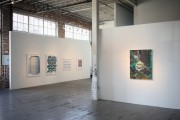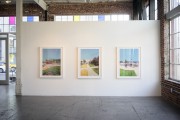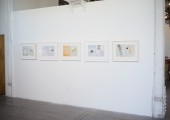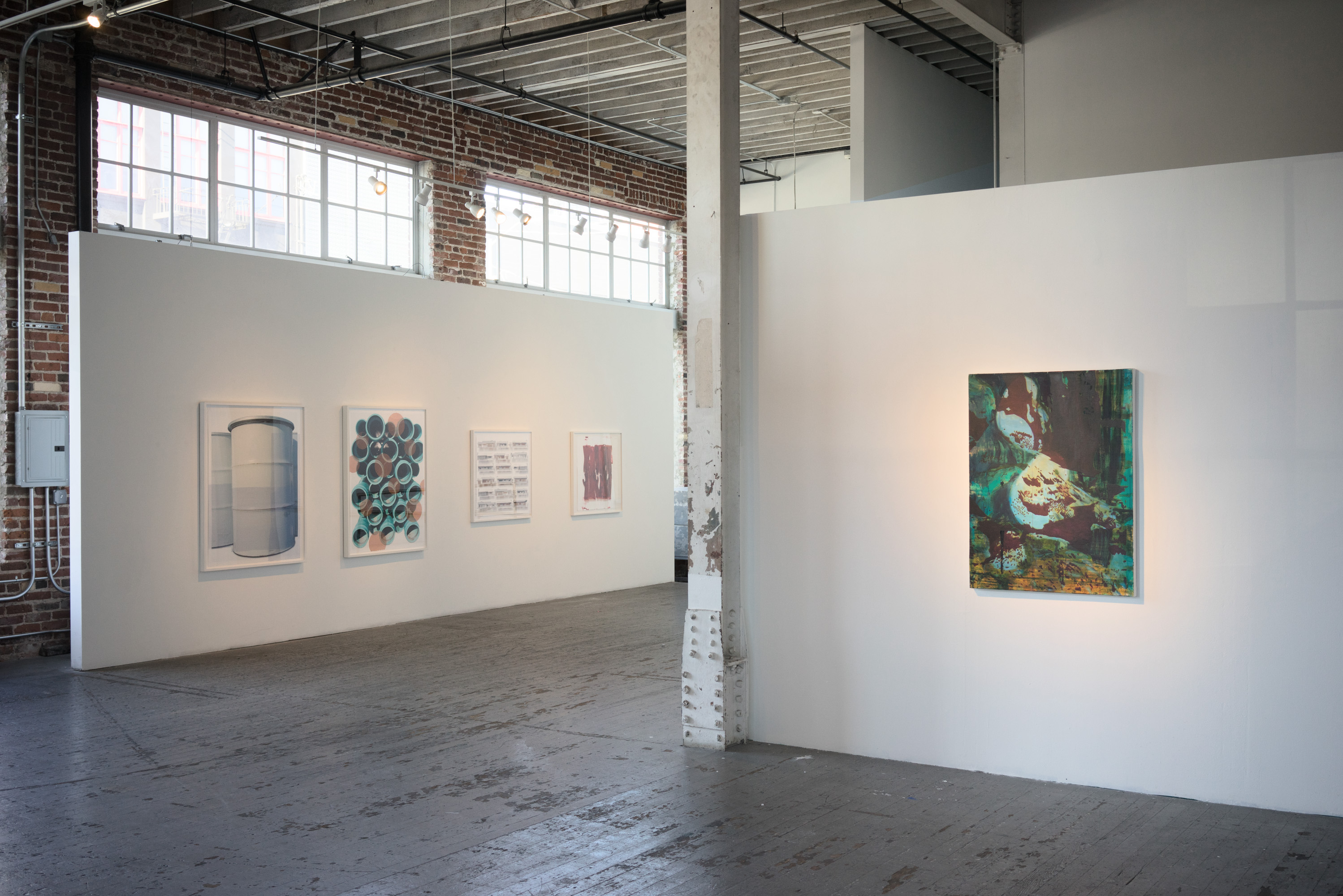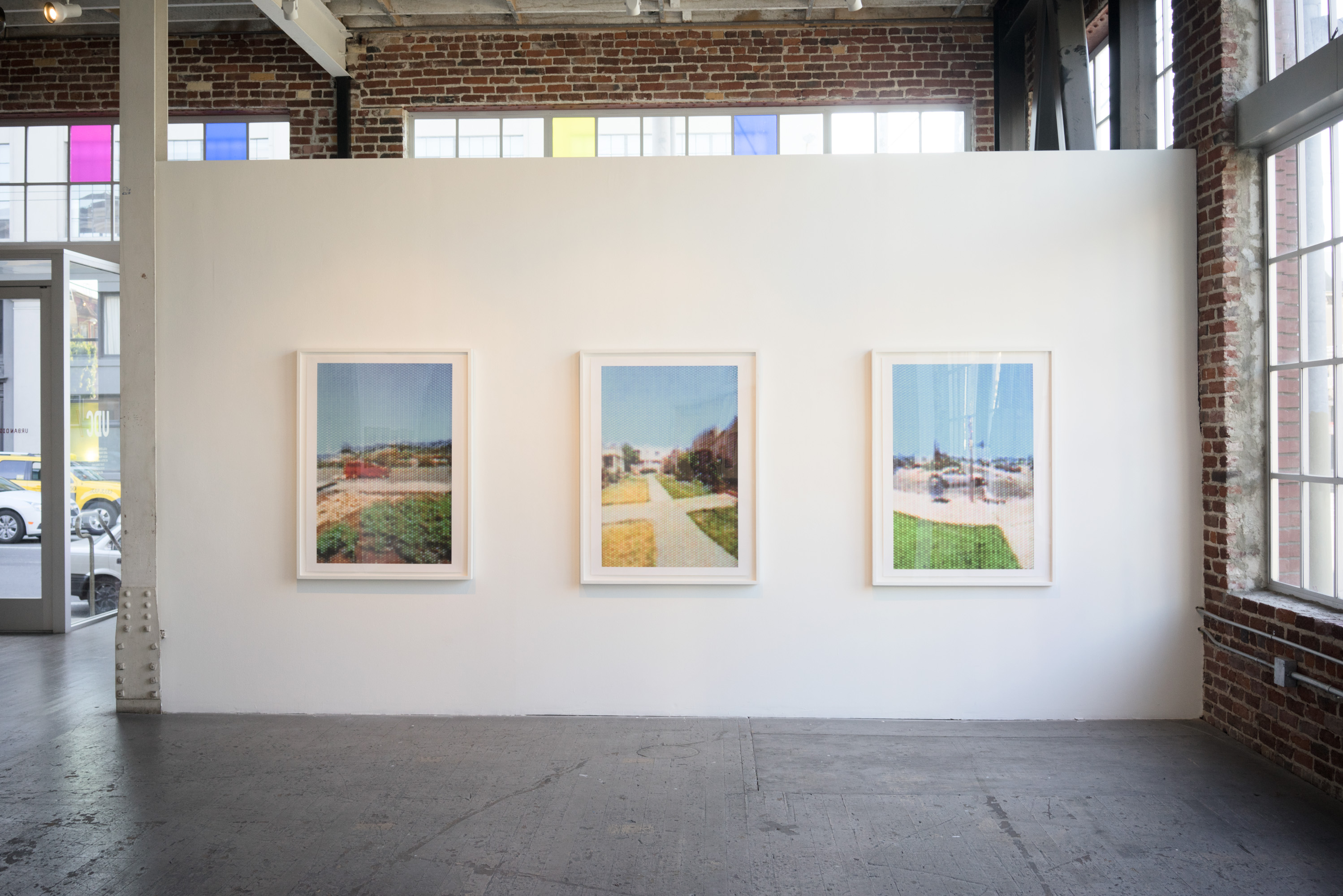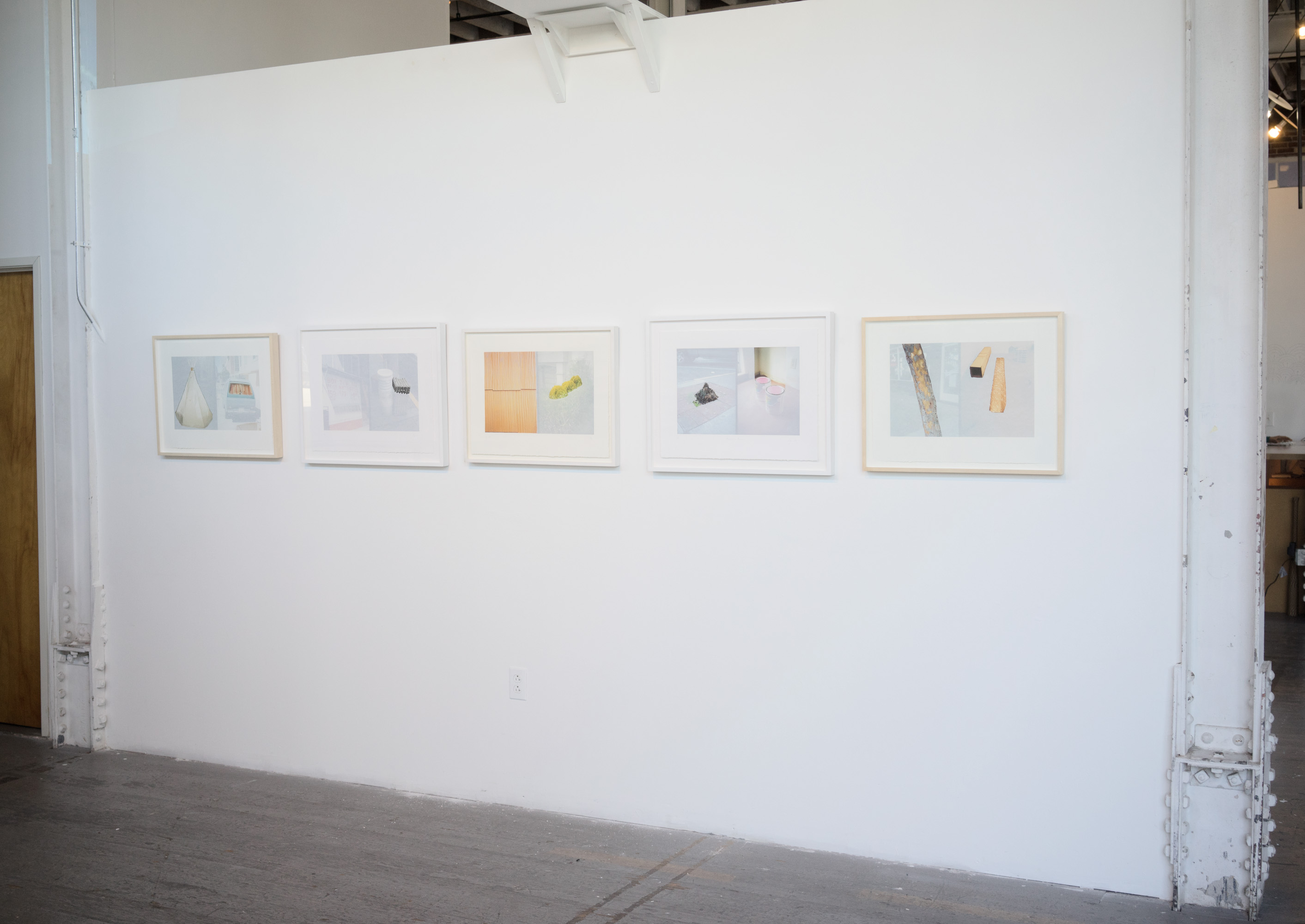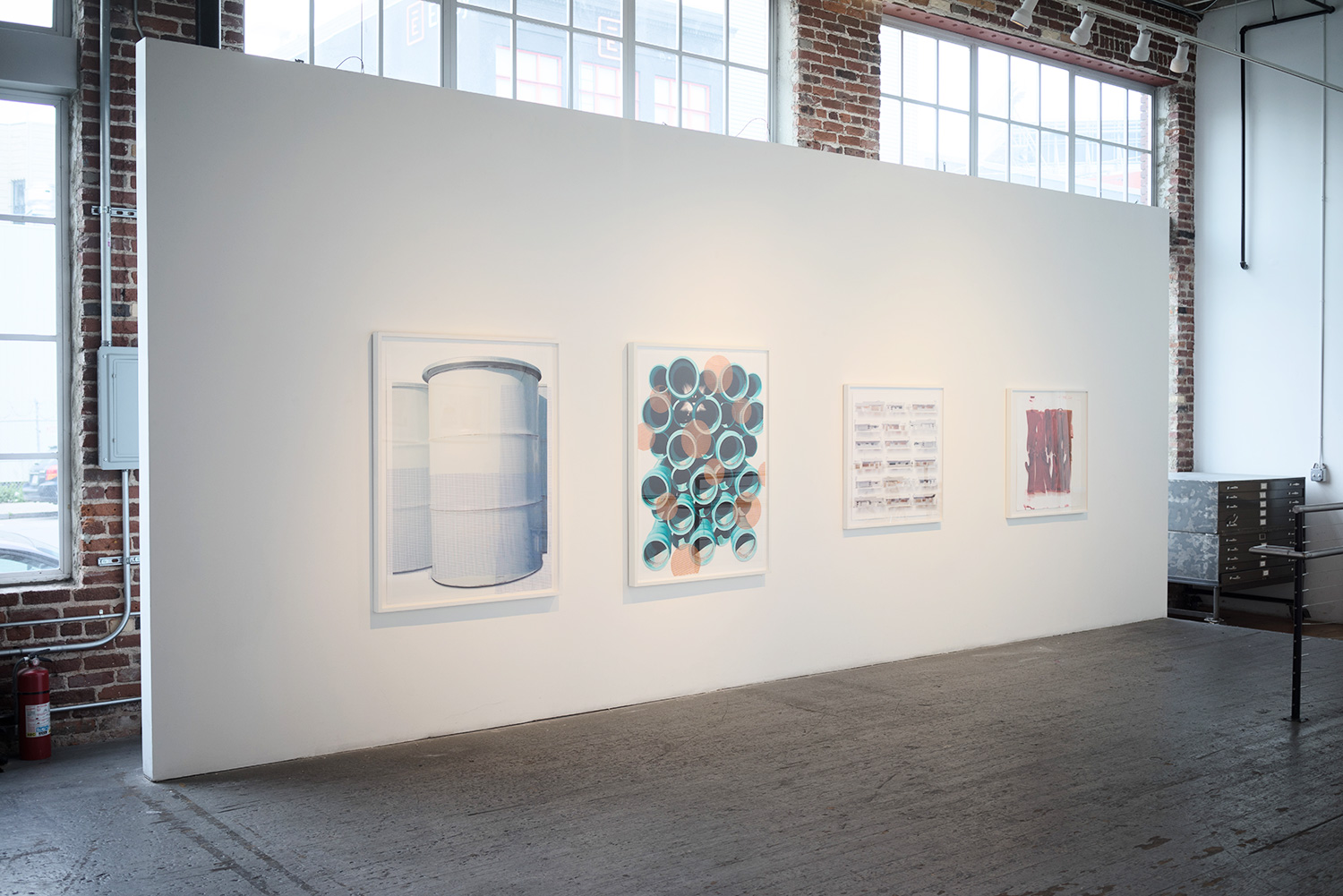Reconcile
Install Images
About
In 2017, Gallery 16 will present an ongoing series of curated exhibitions focusing on prints from the G16 Editions 24 year archive. The first exhibition, RECONCILE, presents three renown San Francisco Bay Area artists. All of the works included in this show find the artists using various forms of photography. The earliest works included in the show are from 1998, when the world was beginning to experience the impact and effects of the digital technology on their daily lives.
Rebeca Bollinger’s work from this period used online archives as source material for drawing, photography, writing, video, sculpture and installation. In the early days of the world wide web, dial up modems, email, chat rooms, Bollinger was in the vanguard of artists inquiring how these nascent systems would affect our lives, privacy and connectedness.
The suite of three prints was made with Live Cams, early webcams, on the internet, Live cams were mounted overlooking bridges, public squares, and other public places, their output made available on a public web page in accordance with the original concept of a "webcam".
The image in each of the prints display the circular pattern of the LCD projector used to illuminate the Live Cam image onto a lensless camera. Bollinger’s work of this period not only presents the optical beauty of the process, it blurs the boundaries between analog and digital throughout.
In 1999, Deborah Oropallo, widely known as a painter, began the first of many projects with Gallery 16. Oropallo produced a series of works which became the subject of a solo exhibition at the San Jose Museum and a companion book titled Material Handling. This was the artist’s first investigation into the use of digital media in the process of artmaking. Oropallo frequently appropriates images from everyday life as subject matter. Following a major industrial fire in a building next to Oropallo’s Berkeley residence, the artist began a series entitled Material Handling. It involved images of containers for inherently dangerous or hazardous material. This work references symbols of safety and survival. The prints were made by creating an image using digital photography, this image is then manipulated in the computer and ultimately printed on a fine english printmaking paper using a vintage digital Iris printer. The digital prints are then taken into the artist’s studio where she completes the work by silkscreening over them with oil paint to obfuscate the image and create a layered surface. This use of silkscreen is not only formally compelling, but also adds additional layers of content to work. The silkscreened patterns created from fencing material and drainage screens and industrial hardware, transform ordinary objects into visually resonant abstractions.
Artist Gay Outlaw is recognized for her rigorous and unexpected explorations of material—from printmaking and photography to sculpture made of wood, glass, caramelized sugar, and bronze. Gay Outlaw's work in photography and sculpture explores form through structure, pattern and translation. Her process often begins with a form from one of her photographs. In 2003, we invited Outlaw to produce an edition of mixed media prints that extended this inquiry. These works stem from the artist's use of photography to record images that strike her in the course of her day. The series she explores here involves unintentional diptychs—sequential images that accumulate in her camera over time. The double-images are scanned and printed as a ground for the silkscreen process that follows. Outlaw creates screens to mask out all but certain areas of the print so as to draw a more concise relationship between the two images for the viewer.
"What is so intriguing about Outlaw's work—whether in sculpture or photography—is how she synthesizes her disparate vocabulary of forms, materials, volumes, and surfaces to create a visual language at once coherent, particular, and indeed exquisite."




